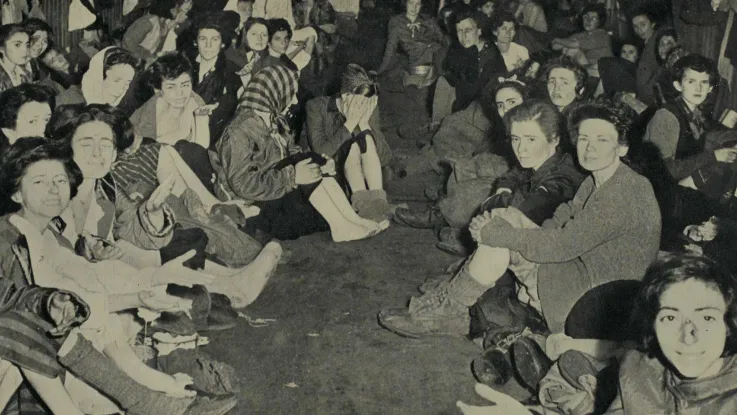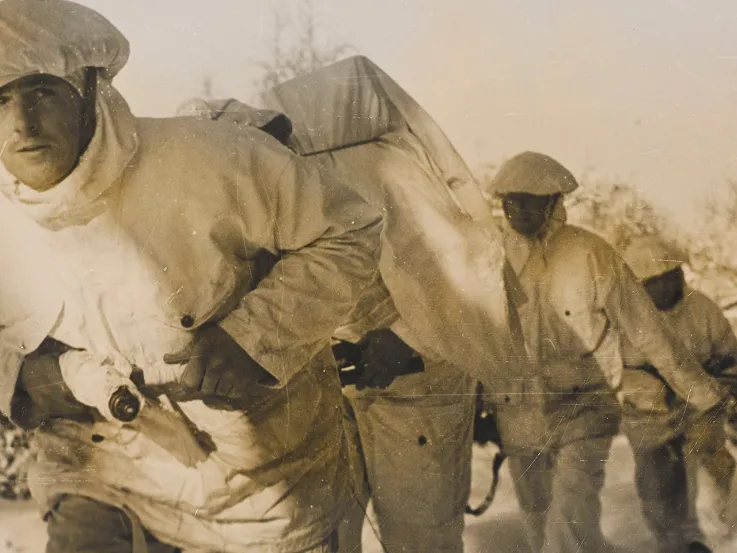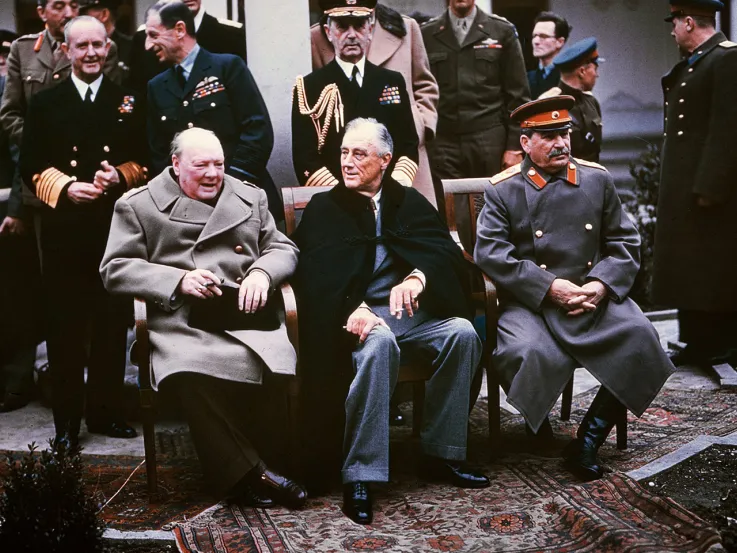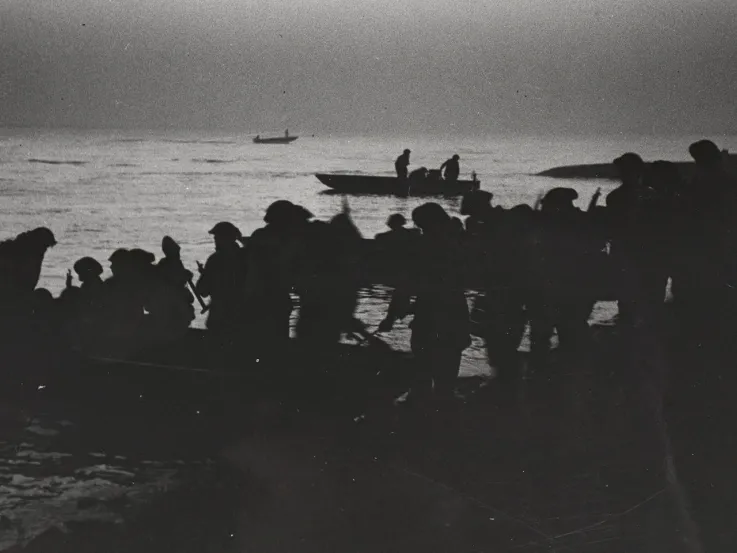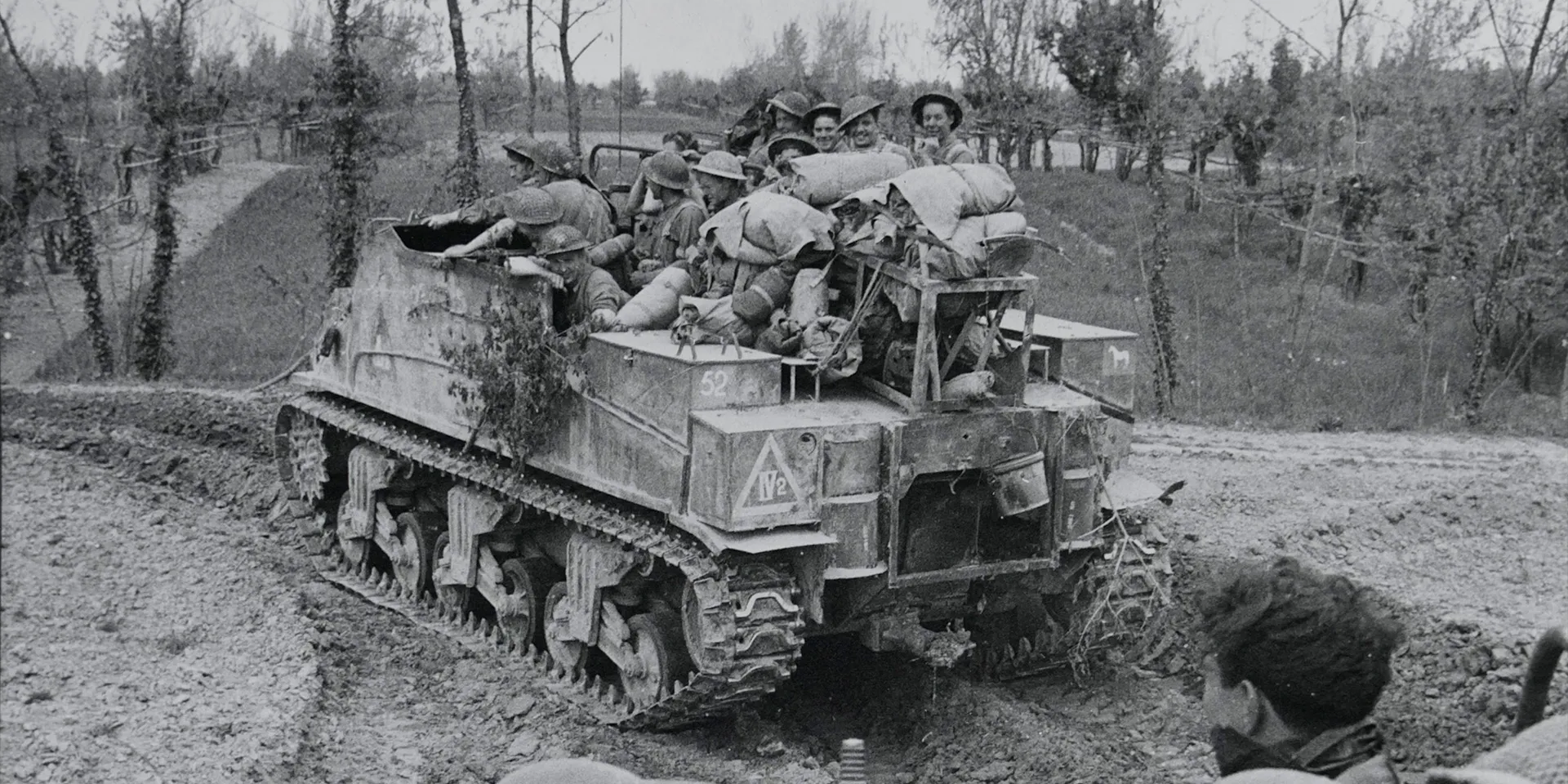
State of affairs
In April 1945, the war in Europe rapidly reached its finale. The successful Allied crossing of the River Rhine in late March now allowed for a decisive sweep through German territory. Within just a few weeks, British and American troops linked up with their Soviet allies on the River Elbe. In the process, an entire German army group was routed in the Ruhr area.
Along the way, British and Allied soldiers discovered shocking evidence of the Third Reich’s crimes. The liberation of numerous concentration camps, including the British Army’s discovery of Bergen-Belsen, laid bare to the world the genocidal depravity of the Nazi regime.
In the Mediterranean, British and Allied forces launched the long-awaited Operation Grapeshot. This offensive drove the remaining German forces in Italy back to the River Po and beyond, an overwhelming and devastating advance that would effectively end Axis resistance in the region.
By the end of the month, Adolf Hitler and Benito Mussolini – the leaders of Nazi Germany and Fascist Italy respectively – were both dead, and the fighting in Germany and Italy was all but over. On every front, British soldiers now eagerly awaited the official declaration of Victory in Europe.
The Ruhr pocket
After crossing the Rhine, the British-Canadian 21st Army Group and the American 12th Army Group both made a rapid advance into Germany.
On 1 April, the lead elements of the two Allied pincer movements met at Lippstadt, east of the Ruhr, and completed the encirclement of Germany’s Army Group B, comprising more than 300,000 troops. This was the last substantial German fighting force left on the western front.
Destruction of the German Army in the West
After the encirclement of the German forces in the Ruhr, the 21st Army Group began to ‘squeeze the pocket’ to force a final surrender. In some towns and cities, white flags greeted the arrival of Allied soldiers; in others, German troops fiercely defended every street.
Pictured above are Cromwell tanks of the 15th/19th King’s Royal Hussars near the Dortmund-Ems Canal on 3 April.
To the bitter end
Despite the inevitability of defeat, German forces continued to resist the Allied advance right up until the very end of the war. This was partly due to an ideological commitment to the Nazi cause, but even more significant was the escalating terror of Hitler’s regime during its downfall.
Although the war was clearly lost, roving Nazi death squads summarily executed apparent deserters across many towns and cities.
Operation Amherst
7 April 1945
On 7 April, British and Free French SAS troops launched an airborne attack in the north-east region of the Netherlands still under German occupation. These forces were intended to sow chaos, capture key bridges and eventually link up with advancing Canadian troops.
At this stage, many Allied commanders were keen to minimise risks and reduce casualties. However, for these French soldiers (accompanied by a small number of British troops), the operation was a chance to prove themselves despite the significant dangers involved.
To the Elbe!
As the Ruhr pocket continued to shrink, Allied troops also continued their advance eastwards towards the River Elbe. This was the designated point where the British and Americans would link up with Soviet forces.
The picture above shows British troops, mainly of The Cheshire Regiment, crossing the River Weser in Lower Saxony on 7 April.
‘Had breakfast. Bacon and eggs. We have a comfortable HQ here. A well-appointed country house which we have restored to some of its former luxury. Traffic is now streaming past. This is undoubtedly the decisive stage of the war.’Operational diary of Major Geoffrey Dorey Kaines MC, Middlesex Regiment, Hungen, Germany (north of Frankfurt) — 8 April 1945
Operation Grapeshot
6 April – 2 May 1945
On 6 April, the long-awaited spring offensive in Italy – codenamed Operation Grapeshot – began in the Lombard Plain. Its objective was to destroy enemy forces south of the River Po.
An amphibious assault would then allow combined British, Indian, American, Polish, Italian, Brazilian and Commonwealth soldiers to liberate Verona and other areas of northern Italy.
Sepoy Ali Haidar VC
On 9 April, during the crossing of the River Senio in north-east Italy, a company of the 13th Frontier Force Rifles was ordered to assault enemy positions strongly dug in on the far bank.
Sepoy Ali Haidar, from Hangu in modern-day Pakistan, managed to cross the river while most of his company were temporarily held up. On his own initiative, Haidar charged the nearest post. Then, despite sustaining a severe injury, he went on to charge a second position.
Sepoy Haidar was later awarded the Victoria Cross for his ‘gallant and determined action’.
Battle of Bologna
9-21 April 1945
A Polish-led advance on the Italian city of Bologna began on 9 April. By the end of the war, there were almost 200,000 Polish troops under British command. These forces played a key role in almost all Allied operations in Europe, but perhaps most notably in Italy.
‘On the night of 12 April I went with one of my sections to join the Buffs for an amphibious operation. We moved out just after 3am and climbed into one of the fantails (or buffaloes) [amphibious vehicles] in a wooded area near the lake, about two miles west of San Alberto... At about 11am we approached an eastern-facing shore, well north of Argenta. I was standing with Major D F Bennett, of the Buff’s A Company, in the leading fantail, when the enemy opened up; we were machine-gunned but many of the vessels behind were hit by cannon fire from the north.’Account of Captain E Lightfoot, Eighth Army, Comacchio, Italy — 12 April 1945
Allied Commission for Italy
Back in 1943, following the collapse of the Italian Army and the removal of Benito Mussolini, the Italian government had sought peace with the Allies and joined in the war against the Axis powers. Soon after, the British and Americans created the Allied Commission for Italy to enforce the terms of the treaty.
For the next two years, the Allied Commission oversaw a military occupation in the areas of the country under their control. By the spring of 1945, as numerous political groupings laid their claim upon the future of Italy, the challenges involved with running civil affairs were becoming ever more acute.
The death of President Roosevelt
12 April 1945
After months of declining health, Franklin Delano Roosevelt, the president of the United States, died on 12 April. Harry S Truman assumed the presidency.
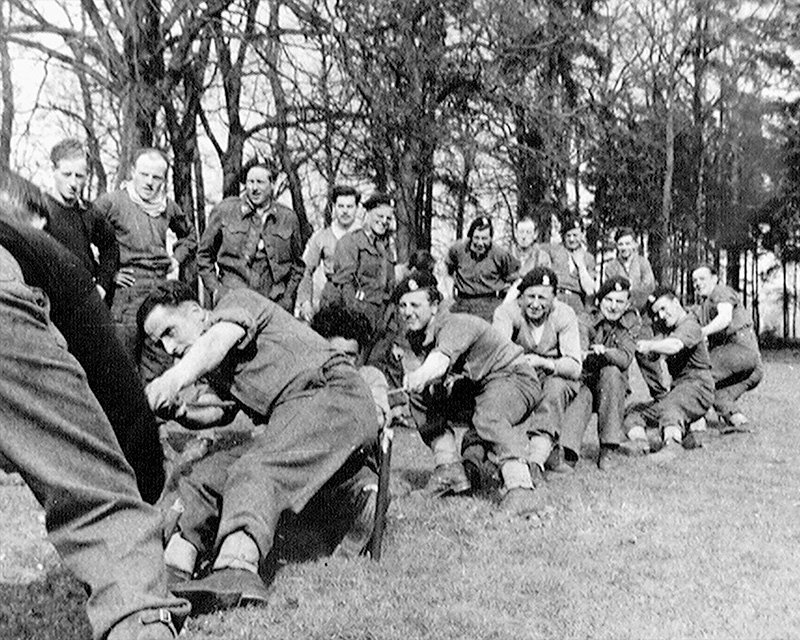
Tug-of-war
On 12 April, Major The Lord Rathdonnell of the 15th/19th The King’s Royal Hussars ordered a day of rest for his men near the German town of Buchholz. He organised a sports contest, including a sack race and a tug-of-war (pictured above).
In the days that followed, his unit saw hard fighting to gain a crossing over the River Aller at nearby Winsen.
Operation Anger
On 12 April, British and Canadian troops entered Arnhem. They liberated the entire city in only four days. Within a couple of weeks, a general truce brought all military operations in the Netherlands to an end.

British prisoners liberated across Germany
On 13 April, US troops liberated the inmates of Oflag IX/AZ, a prisoner-of-war (POW) camp for British officers in Rotenburg an der Fulda (pictured). Like many British POWs, these men had been forcibly marched away from the front line by their German captors during the final weeks of the conflict.
Elsewhere, British prisoners were sometimes left to fend for themselves as their German guards simply fled.
‘On the 22 April the Germans disappeared at mid-night and our fellows took over. Then at 9 o’clock on the 23 April the Russian advance party arrived in the camp on horse back and told us we were liberated by them, and that we were to stay in the camp for a few days and only go out to get what we wanted for eating. This the fellows did... and later on in they came with pigs, beef, potatoes etc. Everyone had a great feed and there was rejoicing.’Sergeant Alec Shoosmith, 3rd County of London Yeomanry (Sharpshooters), Stalag IV B prisoner-of-war camp, Mühlberg, Germany — 22-23 April 1945
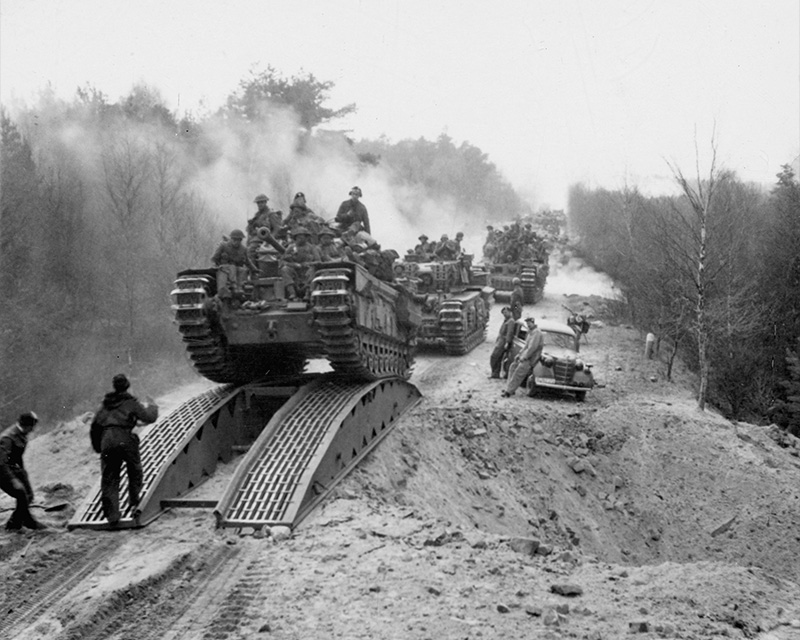
Next stop: Hamburg
In mid-April, General Eisenhower, the Allied Supreme Commander, ordered all armies to halt at the River Elbe. British forces were to push north-east towards Hamburg, while American and French forces would advance towards Austria.
In northern Italy, the Eighth Army moved towards the borders of Yugoslavia as German forces disintegrated on all fronts.
Pictured above are Churchill tanks of 3rd Battalion, The Scots Guards crossing a bridged mine crater near the Elbe on 14 April.
British troops liberate Bergen-Belsen concentration camp
15 April 1945
In recent months, Soviet troops had uncovered harrowing evidence of the Third Reich’s most atrocious crimes while liberating concentration camps and killing centres in Poland, including Majdanek (July 1944) and Auschwitz-Birkenau (January 1945).
In early April 1945, American troops encountered large numbers of emaciated inmates and piles of unburied corpses at Buchenwald, near Weimar in Germany.
On 15 April, British troops arrived at Bergen-Belsen, about 60km (37 miles) north-east of Hanover. They found around 60,000 men, women and children, many of whom had survived ‘death marches’ from other camps in the east. Beside them were piles of skeletal bodies. Disease, including typhus, was rife among the survivors. Over the next few weeks, around a quarter of them would also die.
The Nazi regime had persecuted Jews, political prisoners, gay men, Roma, Jehovah’s Witnesses and so-called ‘asocials’. In the spring of 1945, the evidence of these atrocities shocked Britain and the world. But the precise character and full extent of these crimes – especially the genocide of Europe’s Jews – were not fully realised at the time of liberation.
Belsen medical kit
Pictured above is a medical kit belonging to Major John Grice of the Royal Army Medical Corps, who took part in the liberation of Bergen-Belsen.
‘A true Dante’s Inferno, created – not by the imagination – but by Nazi Germany. A creation beyond the imagination in its beastliness. This is Belsen Concentration Camp as I saw it... At Belsen the Germans have achieved the final degradation of the human being... Why did I visit Belsen? Given the opportunity I went because I know that in a few years’ time only, clever people will say “Nonsense! Don’t you realise that was just war propaganda?” I shall know how to reply. And the more who do the better for the peace of the world.’A British military observer’s report on Bergen-Belsen — April 1945
Concentration camps and killing centres
In the context of the Holocaust, it is important to distinguish between concentration camps, like Bergen-Belsen, and killing centres (sometimes termed extermination camps), like Auschwitz-Birkenau.
The purpose of Nazi concentration camps was to contain prisoners in one place for use as forced labourers. The administration of these camps had an utter disregard for inmates’ health, which resulted in tens of thousands of deaths.
The primary aim of Nazi killing centres, on the other hand, was to annihilate their inmates: predominantly Jews, but also Roma, Poles and Soviet prisoners. At places like Auschwitz, gas chambers were used to commit mass murder.
Battle of Berlin
On 16 April, Soviet forces resumed their offensive, attacking the German capital, Berlin. Over the next two weeks, they encountered incredibly stiff resistance from German forces, who mounted a fierce defence of the city.
Almost 200,000 soldiers and as many as 125,000 civilians lost their lives in the Battle of Berlin.

British units advance on Hamburg
On 18 April, British armoured divisions (pictured above) spearheaded an advance towards Hamburg, the second largest city in Germany. It was the 21st Army Group's final major objective.
Hamburg’s defenders – a motley collection of SS men, paratroopers, conscripted civilians, regular soldiers, sailors, policemen, firemen and Hitler Youth, known as the 1st Parachute Army – attempted in vain to mount a final stand.
‘I passed through the barrier, and found myself in the world of a nightmare. Dead bodies, some of them in decay, lay strewn about the road and along the rutted tracks... Inside the huts it was even worse. I've seen many terrible sights in the last five years, but nothing, nothing approaching the dreadful interior of this hut at Belsen.’Richard Dimbleby’s report from Bergen-Belsen, broadcast on BBC radio. (His description of the camp was so graphic that the BBC declined to air it for several days until he threatened to resign.) — 19 April 1945
Operation Herring
19-23 April 1945
In support of the Allied advance in northern Italy, the final airborne combat drop in Europe landed troops behind German lines around the River Po. These were mainly Italian paratroopers – now fighting on the side of the Allies – but also included a small number of British soldiers.
Over the following days, Allied forces drove across the Po itself.
‘CASCINETTO in particular was strongly held and the bazookamen had to be cleared up and killed before the advance could continue... For the first 2.5 hours the advance was once again extremely slow and squadrons were only doing about 1,000 yards an hour. Once more it was evident that we would have to fight in the dark in order to reach our objective. However, from now on, the advance proceeded apace and it was evident that the enemy crust was broken.’An operation account of the advance to the River Po written by Lieutenant Colonel KJ Price, 9th Lancers, Cascinetto, Italy — 24 April 1945
Death marches
Since the beginning of the year, the Nazis had instigated brutal transfers of weakened camp inmates, usually on foot. This was an effort to hide the evidence of their crimes, retain the use of slave labour, and keep the prisoners as hostages.
On 24 April, 15,000 civilian prisoners were forced on a ‘death march’ from Dachau concentration camp away from approaching Allied soldiers. Only 6,000 survived the ordeal. It was one of the final death marches of the Holocaust.
Budget Day
24 April 1945
On 24 April, the Chancellor of the Exchequer, Sir John Anderson, announced that Britain’s expenditure over the past year had exceeded £6 billion for the first time in history, exceeding revenue by almost £3 billion. He also revealed that the war had cost the country a total of £27 billion to date.
The dire state of Britain’s finances would have a tremendous impact on the country’s role in the postwar world.
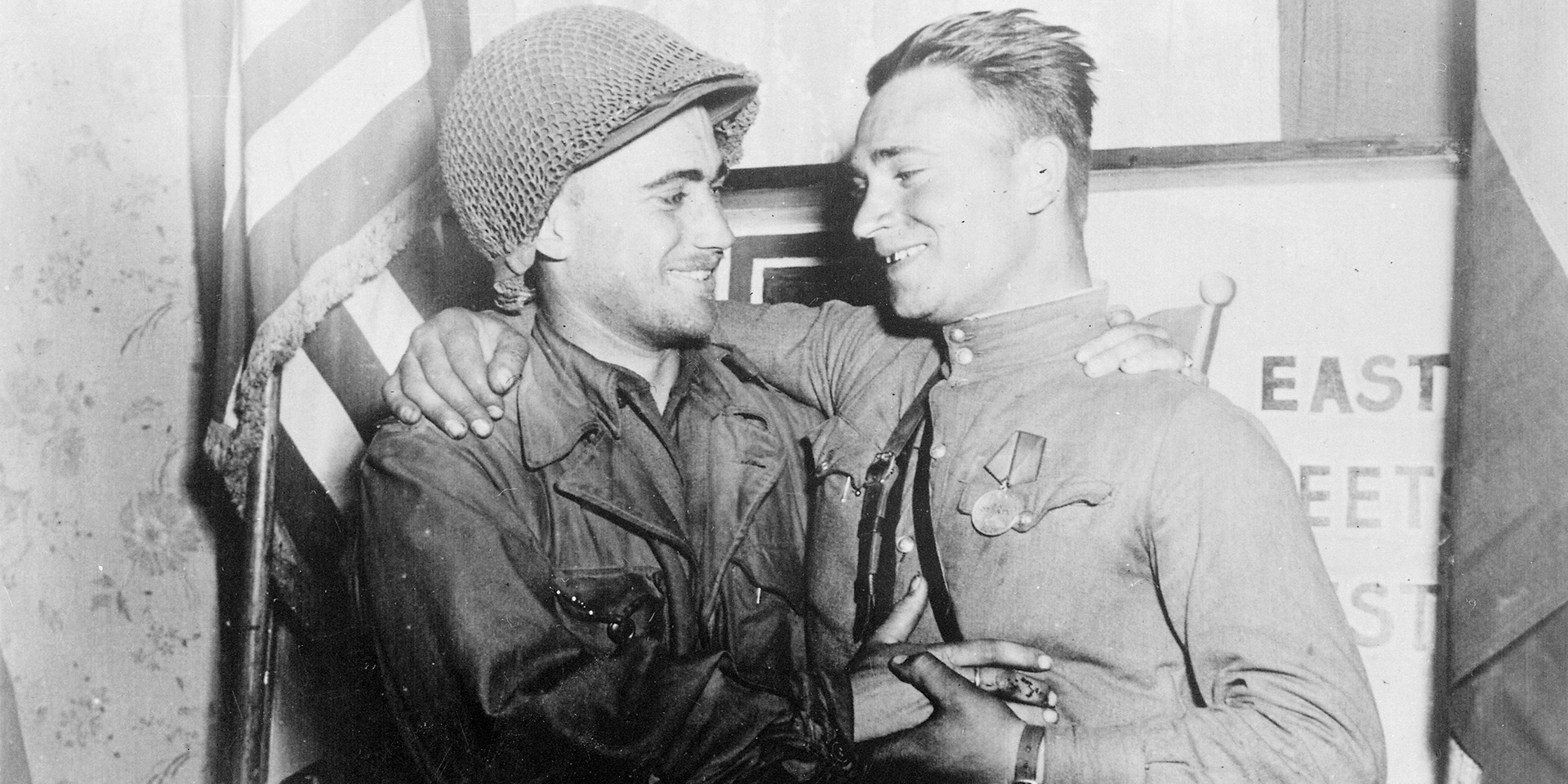
(Image courtesy of the US National Archives)
Elbe Day
25 April 1945
Soviet troops, advancing from the east, and US forces, advancing from the west, first made contact on 25 April near the German town of Torgau on the River Elbe. This historic milestone is commemorated as Elbe Day.
Two days later, an official handshake was staged for photographers as the Allied governments each declared their ongoing determination to complete the destruction of the Third Reich.
United Nations Conference on International Organisation
25 April – 26 June 1945
On 25 April, delegates from 50 nations came together in San Francisco, USA, to develop a charter for the United Nations. The role of this new organisation would be to preserve world peace after the fighting ended.
Italian partisans kill Mussolini
On 27 April, Benito Mussolini and his mistress, Clara Petacci, were captured near Lake Como as they attempted to flee to Switzerland.
The couple were summarily executed and their bodies transported to Milan, where they were put on public display.
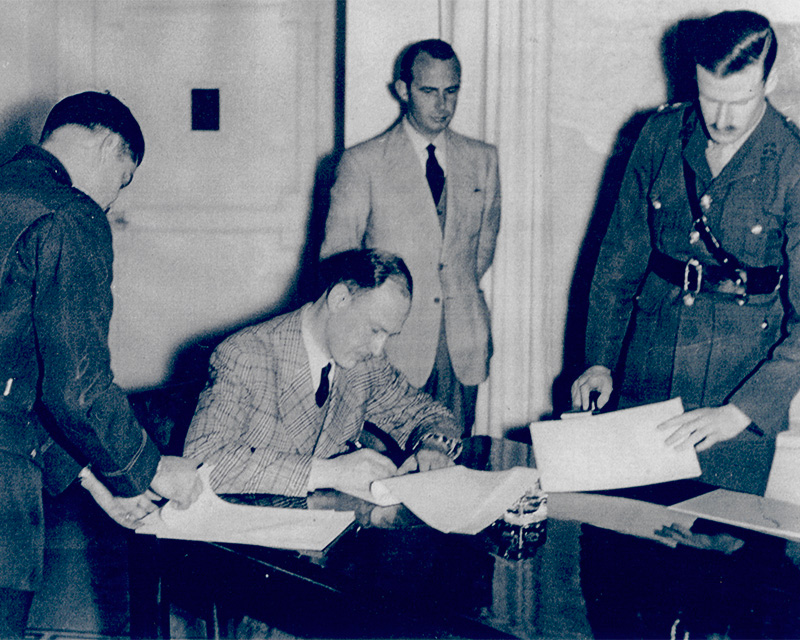
Surrender of German forces in Italy
On 29 April, at the Royal Palace of Caserta, near Naples, two German army officers signed the terms of surrender of the remaining Axis forces in Italy (pictured above). Hostilities would end at noon on 2 May.
British advance in Burma slows
Meanwhile, the British forces in Burma (now Myanmar) were engaged in a race against time to reach Rangoon (now Yangon) before the onset of the monsoon season.
On 27 April, advancing Indian Army troops encountered a Japanese rearguard in Pegu (now Bago), about 65km (40 miles) north-east of the capital city.
At the end of the month, the first monsoon hit. Severe flooding now further impeded the forward progress of the Allied campaign.
The capture of Hamburg
In Germany, British forces continued their advance. The city of Bremen fell on 26 April; two days later, the assault on Hamburg began. Within just a few hours, the German defenders sent a deputation to British lines to negotiate a surrender.
‘The attack went in at 1430 hours. It was a fine sight – the waves of Grenadier Guards walking steadily toward the camp – no fuss, no hurry, they might have been on the parade ground. A few yards away a tank was giving supporting fire from its machine guns, and every few minutes a cloud of smoke would rise from a bursting shell.’Captain R Barer, Royal Army Medical Corps, recalls the liberation of Sandbostel concentration camp (which also functioned as Stalag XB prison camp) near Hamburg, Germany — 29 April 1945
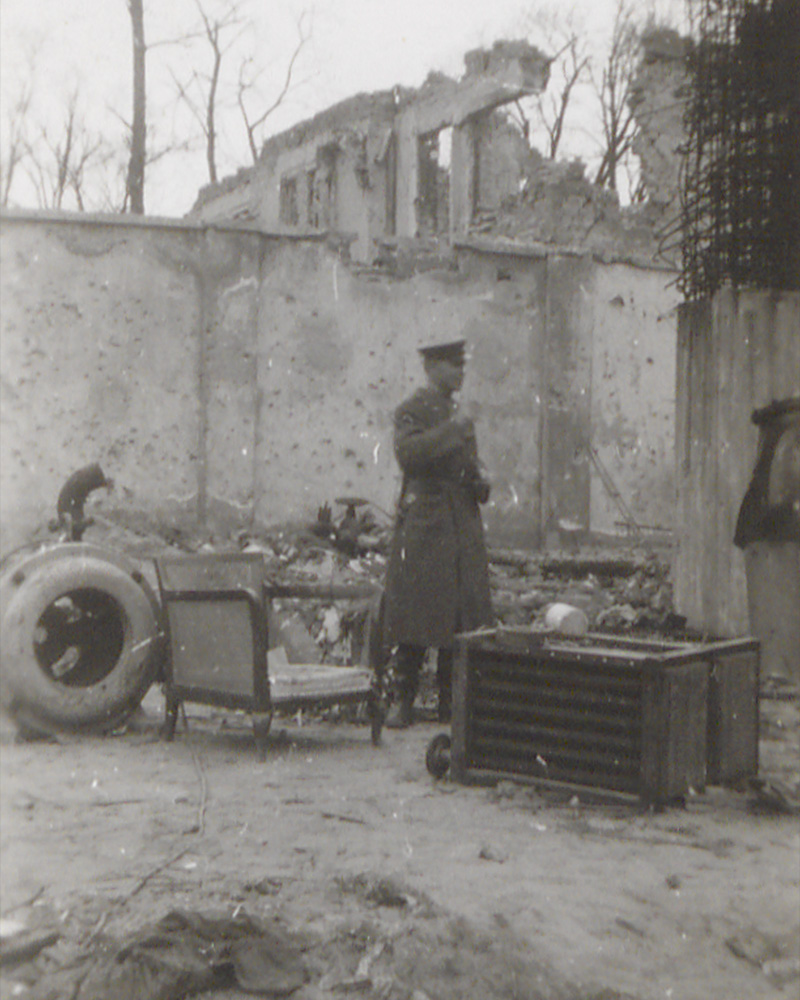
Adolf Hitler commits suicide
30 April 1945
As Soviet soldiers drew ever closer, and with news arriving of Mussolini’s very public demise, Adolf Hitler and his wife, Evan Braun, committed suicide inside the Führerbunker in central Berlin. Their bodies were then burned.
In the months that followed, scores of Allied soldiers attempted to visit this macabre subterranean site. Above, a Soviet guard is pictured outside the bunker after the fighting had ended.
On This Day: 1945
This is the fourth instalment of a series exploring the British Army's role in 1945 – one of the most decisive years in modern history – drawing upon the National Army Museum's vast collection of objects, photographs and personal testimonies.
Throughout 2025, a new instalment will be released each month that focuses on events from 80 years beforehand. The series will highlight the everyday experiences of Britain’s soldiers alongside events of grand historical significance.








